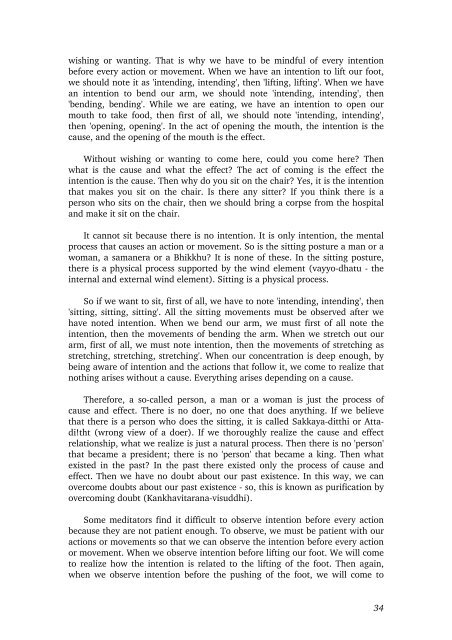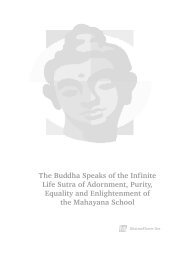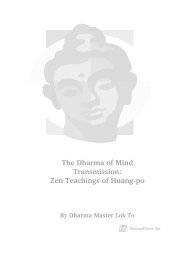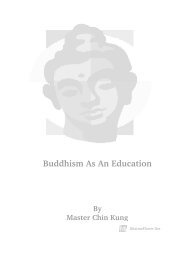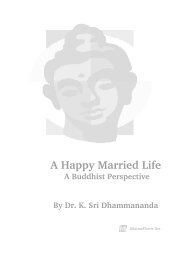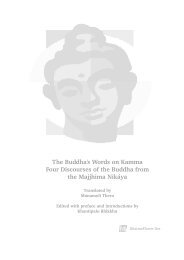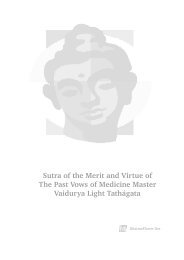Vipassana Meditation : Lectures On Insight Meditation by Venerable
Vipassana Meditation : Lectures On Insight Meditation by Venerable
Vipassana Meditation : Lectures On Insight Meditation by Venerable
You also want an ePaper? Increase the reach of your titles
YUMPU automatically turns print PDFs into web optimized ePapers that Google loves.
wishing or wanting. That is why we have to be mindful of every intentionbefore every action or movement. When we have an intention to lift our foot,we should note it as 'intending, intending', then 'lifting, lifting'. When we havean intention to bend our arm, we should note 'intending, intending', then'bending, bending'. While we are eating, we have an intention to open ourmouth to take food, then first of all, we should note 'intending, intending',then 'opening, opening'. In the act of opening the mouth, the intention is thecause, and the opening of the mouth is the effect.Without wishing or wanting to come here, could you come here? Thenwhat is the cause and what the effect? The act of coming is the effect theintention is the cause. Then why do you sit on the chair? Yes, it is the intentionthat makes you sit on the chair. Is there any sitter? If you think there is aperson who sits on the chair, then we should bring a corpse from the hospitaland make it sit on the chair.It cannot sit because there is no intention. It is only intention, the mentalprocess that causes an action or movement. So is the sitting posture a man or awoman, a samanera or a Bhikkhu? It is none of these. In the sitting posture,there is a physical process supported <strong>by</strong> the wind element (vayyo-dhatu - theinternal and external wind element). Sitting is a physical process.So if we want to sit, first of all, we have to note 'intending, intending', then'sitting, sitting, sitting'. All the sitting movements must be observed after wehave noted intention. When we bend our arm, we must first of all note theintention, then the movements of bending the arm. When we stretch out ourarm, first of all, we must note intention, then the movements of stretching asstretching, stretching, stretching'. When our concentration is deep enough, <strong>by</strong>being aware of intention and the actions that follow it, we come to realize thatnothing arises without a cause. Everything arises depending on a cause.Therefore, a so-called person, a man or a woman is just the process ofcause and effect. There is no doer, no one that does anything. If we believethat there is a person who does the sitting, it is called Sakkaya-ditthi or Attadi!tht(wrong view of a doer). If we thoroughly realize the cause and effectrelationship, what we realize is just a natural process. Then there is no 'person'that became a president; there is no 'person' that became a king. Then whatexisted in the past? In the past there existed only the process of cause andeffect. Then we have no doubt about our past existence. In this way, we canovercome doubts about our past existence - so, this is known as purification <strong>by</strong>overcoming doubt (Kankhavitarana-visuddhi).Some meditators find it difficult to observe intention before every actionbecause they are not patient enough. To observe, we must be patient with ouractions or movements so that we can observe the intention before every actionor movement. When we observe intention before lifting our foot. We will cometo realize how the intention is related to the lifting of the foot. Then again,when we observe intention before the pushing of the foot, we will come to34


